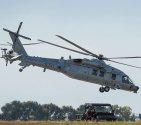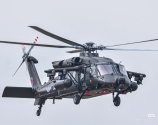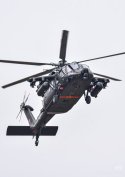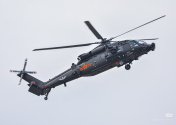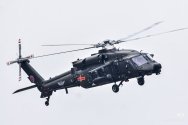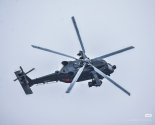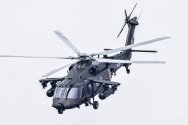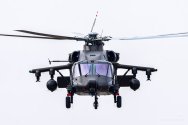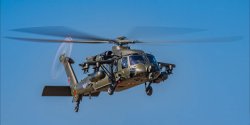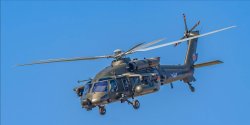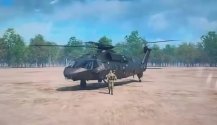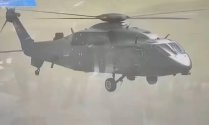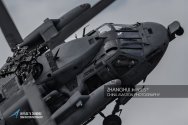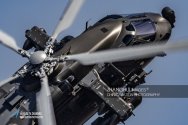You are using an out of date browser. It may not display this or other websites correctly.
You should upgrade or use an alternative browser.
You should upgrade or use an alternative browser.
Z-20 (all variants) thread
- Thread starter delft
- Start date
My favorite pictures are always when the cowlings are open. You can really see how things come together!High-resolution images of Z-20T from the Tianjin Helicopter Expo, including ones showing its engine compartment.








TerraN_EmpirE
Tyrant King
Is that a new Arma 3 mod? Because it’s gotta be CGI.
Hi,
now we need to see mini gun hanging out from Z20 windows
thank you
now we need to see mini gun hanging out from Z20 windows
thank you
It has to be, look at the trees and foliage in the background.Is that a new Arma 3 mod? Because it’s gotta be CGI.
plawolf
Lieutenant General
I think the point still stands that transport platforms are primarily for transport. That's not to say they cannot be used for other roles and using all available resources to handle swarm attacks is of course something that needs to be done - when it needs to be done.
I don't think PLA has the luxury of a surfeit of troop helos at the moment to be so focused on dedicating rotary wing transports to counter-swarm roles? Otoh, there are numerous (ground) platforms being developed for this specific role.
Short of the actual invasion of the Japanese home islands, China doesn’t need to use helicopters for transport too much in most realistic combat scenarios.
There is literally zero realistic invasion scenarios against Mainland China by any adversary, so rapid reaction forces are not of paramount importance.
Sure there are plenty of alternative options to use to deal with cheap drone swarms, but in a near-peer war, logistics and attritional costs are of paramount importance. Do you really want to use a massive, expensive SAM to deal with a cheap drone when you can shoot them with a small cheap missile using a helicopter that doesn’t have pressing duties anyways? The opportunity cost differences between using fastjets and SAMs to deal with drones compared to Z20Ts will be massive.
on FOBs, pushing your FOBs forward also puts your FOBs within range of NLOS loitering munitions without the level of AD umbrella that a airbase will have.
Firstly, just what kind of NLOS loitering munitions can have reach to the mainland Chinese coast from what launch platform?
In any realistic war scenario, the U.S. and minions will get pushed out to the second island chain in the opening days or even hours of commencement of hostilities. That also extends to their ISR capabilities. What kind of thousand km+ ranged loitering munitions can the US deploy against China?
Secondly, you are vastly overestimating how complex and permanent FoBs need to be for rotorwing assets. You can literally set up in parking lots and empty fields within an hour, and also pack up and move out almost as quickly. The sheer number of possible sites is going to be impossible for the US to keep track of even in peacetime, never mind during wartime conditions. They can easily do randomised redeployments for every refuelling and re-arming stop, so even if you see some z20s getting refuelled and rearmed somewhere by good luck, you are almost certainly to never see them at that spot again. Indeed, the PLA would absolutely love it if you are stupid enough to waste your limited and rapidly diminishing recon and strike assets trying to play whack-a-mole chasing Z20 refuelling trucks around the Chinese countryside and coasts instead of targeting fixed high value military and industrial targets.
Especially for defence of static points of interest, where possible, probably better to push ground assets to handle this. Retain the helos for taskings where their strength can be leveraged, ie. high tactical mobility to respond to tasks quickly within a limited distance.
One aspect of using Z20s for countering cheap drone spams is that you can push them where ground based defences cannot be deployed. IE, over water. Having Z20s refuelled on or near the coast means they can spend the lion share of their patrol and engagement time over water. So that’s an extra defensive layer above and beyond what land based AA can provide anyways.
Indeed, you do not need to limit the Z20Ts to just the coast. You can use the 056 fleet to support them as refuelling and rearming pads. You can also use LHAs, LHDs and even LPDs as mini helicopter carriers for such missions. If the PLA really wanted to, you can commender civilian cargo ships and use them as larger FoBs if they wanted to. But that carriers greater risk and frankly, the PLAN has so many existing assets it won’t be remotely necessary.
Having hundreds of Z20s engaging enemy spam drones up to hundreds of miles offshore means that the number of such drones that leak through and need to be dealt with by land based defences is going to be a tiny fraction of what they would have had to deal with. Solving both the spam and attritional issues such attacks are meant to cause.
Just because you have a mighty warhammer doesn’t mean it’s automatically the best tool for every task. And one of the great strengths of the PLA is that they are not overly proud but are extremely pragmatic. They will not turn their nose up at a perfectly good use case of something just because they have a more fancy way of dealing with that same problem.

